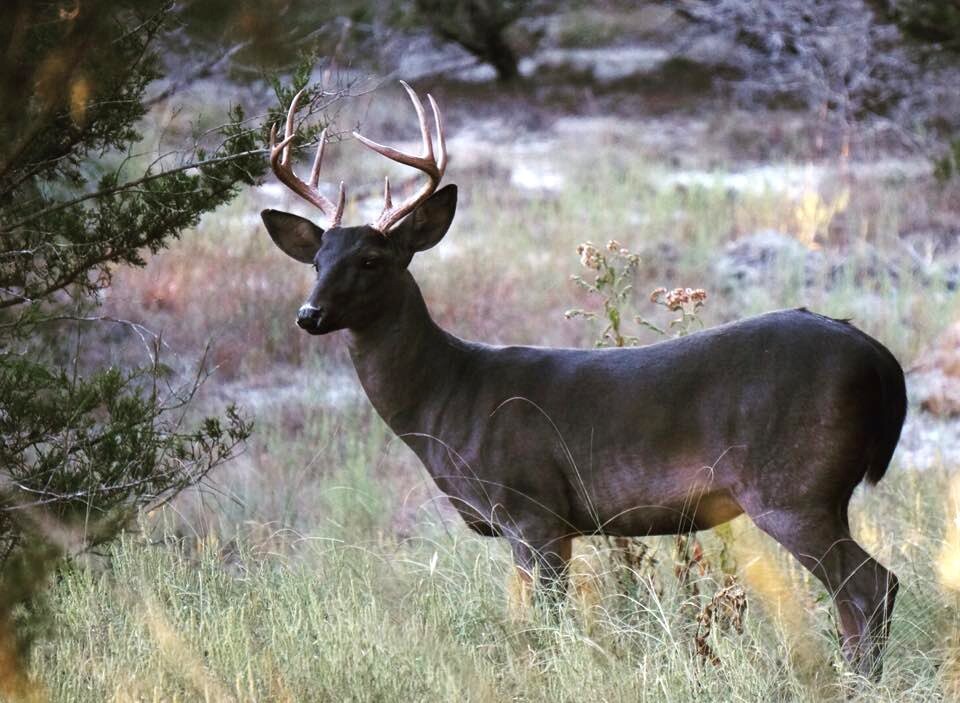What makes a black white tail deer unique is its color. But what exactly makes it melanistic? And is it more rare than an albino deer? Listed below are some facts about these deer. And the answer to the question, “How rare is a melanistic deer?” may surprise you. If you’re considering a deer as a pet, read on to learn more about its appearance!
How Rare Is A Black White Tail Deer?
When it comes to white tail deer, a black one is the most elusive. Although it is possible to find a melanistic black deer, this type of animal is considered the rarest. Most hunters have never even heard of it. While they do exist, their numbers are small and are found primarily in the Texas Hill Country. If you are a hunter, you may be interested in learning more about this type of deer.
A melanistic whitetail is a rare color morph due to a genetic mutation. These deer produce too much of the pigment melanin. These deer have a black head, belly, and tail, but otherwise have a normal body color. They’ve been spotted in Virginia, Pennsylvania, Michigan, and Mississippi. They’re very difficult to catch, but the odds are higher than normal.
It’s not known what causes albinism in deer. Some scientists believe that the albinism gene is recessive. So, for a deer to be albino, it must have two albino genes from both parents. If only one albino gene is inherited, the deer will have a brown coat. While the lack of pigmentation is a good camouflage in winter, it makes it much easier to spot against a summer background. Some studies have found no difference in predation among albino and white deer.
Because this type of whitetail is extremely rare, it’s very hard to get a melanistic deer. In fact, most hunters have never even heard of a melanistic whitetail deer, let alone seen one in the wild. These deer are truly rare and deserve a proper trophy. These deer are not found in many parts of the world. But if you’re lucky enough, you might be able to find a black white tail buck.
How Rare Is A Black White Tail Deer?
There are several different types of whitetail deer, but melanistic whitetails are the most rare and difficult to find. Albinos lack pigment in their skin and hair, making them much rarer. The survival rate of melanistic whitetails is estimated at about 50 percent. But, melanistic whitetails have more than double the survival rate of albino whitetails.
The Quality Deer Management Association describes this phenomenon as a “parasitic twin.” A pair of fawns begin to grow inside the doe, but the embryos don’t completely separate and one stops developing normally. This leads to an extra leg. Often the extra leg is small and located on the shoulders or back. Though it’s rare, parasitic twins have been observed in several animal species, and whitetails are no exception.
This coloration disorder is caused by a recessive gene, called melanic, that causes the skin of white-tailed deer to be a deep dark brown. It’s often caused by mutations of the melanicortin 1 receptor gene. The deer appears dark chocolate brown or black. Despite the rareness of the condition, melanistic whitetails are extremely rare. In fact, Texas Tech University estimates that only about 8.5 percent of the deer population is melanistic.
Is Melanistic More Rare Than Albino?
While albino deer are a relatively common sighting in the United States, melanistic deer are incredibly rare. Albinos lack pigment in their skin and hair, and so are completely white. While melanistic deer are still very rare, it is certainly a very interesting phenomenon to study. Learn more about these elusive animals by reading about them below. This article was written by experts who have studied the plight of melanistic deer and their habitats.
Though there is an extremely small chance of seeing a melanistic deer, it is still possible to spot one. The deer with the dark coat is a melanistic one, resulting from a rare genetic mutation. Melanistic deer are considered endangered and are harvested far less frequently than albino deer. In fact, in the United States, melanistic deer are found in just eight counties.
While most melanistic deer have a darker overall coloration, a few have the semi-melanistic appearance. These deer still retain the white areas found in albino deer. Melanistic fawns are easy to spot, as the velvet on their antlers is gray or brown instead of white. Interestingly, melanistic buck antlers are more similar to albino buck antlers.
Is Melanistic More Rare Than Albino in the US?
In North America, melanistic deer are extremely rare. It’s believed that the melanism of these deer gives them an advantage over albino deer in heavily wooded riparian environments. Although the number of melanistic deer is so small that hunters don’t target them, they’re still a very special trophy. Several hunters have reported bagging a melanistic buck, but most hunters haven’t seen one.
There are two types of deer, albino and melanistic. Albinos have a one-in-30,000 chance of being born a true albino, while melanistic deer are rarer than albinos. While albinos are generally more prominent, melanistic deer have been observed in Pennsylvania, Mississippi, and South Carolina. Due to a genetic mutation, melanistic deer can appear in any state.
If you’re wondering if melanistic deer are more rare than albino, you may want to consider the fact that melanistic bucks have fewer antlers. The velvet of melanistic bucks is usually brownish. SWTSU researchers have seen a single melanistic buck with gray velvet. Generally, melanistic whitetails are very rare and occur in large leased ranches in the continental United States.
Some animals are born melanistic, such as black squirrels. Although melanistic deer are rarer than albino, the differences between the two species are still very visible. In addition to melanistic deer, leucistic deer are rare. In contrast, albino deer have black eyes, while melanistic deer have brown eyes. The melanistic deer’s coat color is more variable than that of the albino. Among the two, the darkest melanistic deer have jet black and chocolate brown coats, while others appear more muddy or bluish.
Can a Whitetail Deer Have a Black Tail?
If you are asking “Can a whitetail deer have a dark tail?” you are not alone. A whitetail deer can actually have a black tail. This is due to a genetic trait known as melanism. In this genetic trait, the deer has an excessive amount of dark pigment, causing it to appear black or dark chocolate brown. Melanism is rarely seen in deer, with 8.5 percent of deer exhibiting melanism.
This type of coloration is not entirely uncommon, but there are some distinct characteristics. Whitetails have a broad antler spread and blacktails have smaller antlers. The two species have similar ranges and overlap areas in the US. Both whitetails and blacktails have the same number of genes. If you’re thinking about a hunt, you’ll want to wear appropriate fair game gear. A black tail is not a sign of aggression, but a whitetail deer can have a black tail.
Although whitetail deer can have black tails, the other subspecies have black. Black-tailed deer are smaller and darker than their white counterparts. The two types are called Columbian black-tailed deer, and Sitka deer, which are native to the Pacific Northwest and Canada. They are closely related to the whitetail deer, but the Columbian black-tailed deer has more dark antlers than the whitetails.
What is the Rarest Deer?
Although whitetails are among the most widely harvested game in the United States, “melanistic” deer are rare to find. Their dark chocolate-colored coats are caused by an excess of melanin in their genes. This condition is rare in other species, including humans, but is found in very few places. Biologist Brent said he had found a melanistic deer in Georgia, and that the only other one east of the Mississippi River was in Pennsylvania in 2002. While melanistic deer are considered “rare,” even experienced hunters would have trouble recognizing one.
Melanistic deer have black coats owing to an overproduction of melanin. The condition is recessive, just as albinism is. They are also called “piebald” because some melanocytes migrate to the coat, creating patches of unpigmented skin. This mutation has a slight disadvantage for their health and camouflage, but the benefits far outweigh this disadvantage.
Despite the fact that melanism is extremely rare in whitetail deer, its numbers are increasing. Texas’ hill country is home to the world’s largest population of melanistic deer. TPWD responded to a commenter on Facebook that asked about melanism in mule deer. This species is even rarer than the whitetail. While mule deer numbers are still small, it’s possible to spot one while hunting.








